Storing Up Success: How Batteries Are Revolutionizing the Global Energy Market
As battery storage systems become increasingly advanced, and research and development continues around the world at an unprecedented rate, what is the current outlook for this exciting technology – and how could it impact energy planning in the future?
As the rise of renewable energy continues to gather pace, a range of hurdles need to be overcome. Among the biggest challenges is how to balance the grid during fluctuations in supply and demand. In other words, what happens to renewables-based power generation if the sun isn’t shining or the wind isn’t blowing?
One solution is already transforming power generation projects around the world: battery storage.
According to KPMG, the widespread and rapid implementation of intermittent renewable energy sources, namely solar photovoltaic (PV) and wind, is “catalyzing efforts to modernize electricity systems around the world[1]”. A key part of this modernization program is the development, introduction and growth of battery storage systems.

Spurred by a surge in manufacturing demand for electric vehicles[2], as well as technological advances that are seeing large-scale installations store renewable energy and provide back-up options to traditional power supplies, the cost of battery storage is falling dramatically. At the same time, the capacity and performance of battery storage systems is increasing exponentially.


At the 2018 LA Autoshow, EV start-up RIVIAN grabbed attention when it unveiled the R1T – an electric pick-up truck with a maximum single-charge range of 645 km. Aiming to change the EV paradigm, RIVIAN believe each journey should leave a mark on the human spirit, but not the planet so they are developing vehicles and technology to get out and explore the world. At their battery center in Irvine CA, their rugged ‘skateboard’ platform is engineered for this with the batteries slung low between the wheel-base.
Three batteries are available for the R1T: a 180 kWh battery (range: 645 km), 135 kWh model (range: 490 km), and 105 kWh option (range: 370 km). With a DC fast charger, it can be charged up to 160 kWh in just 50 minutes.
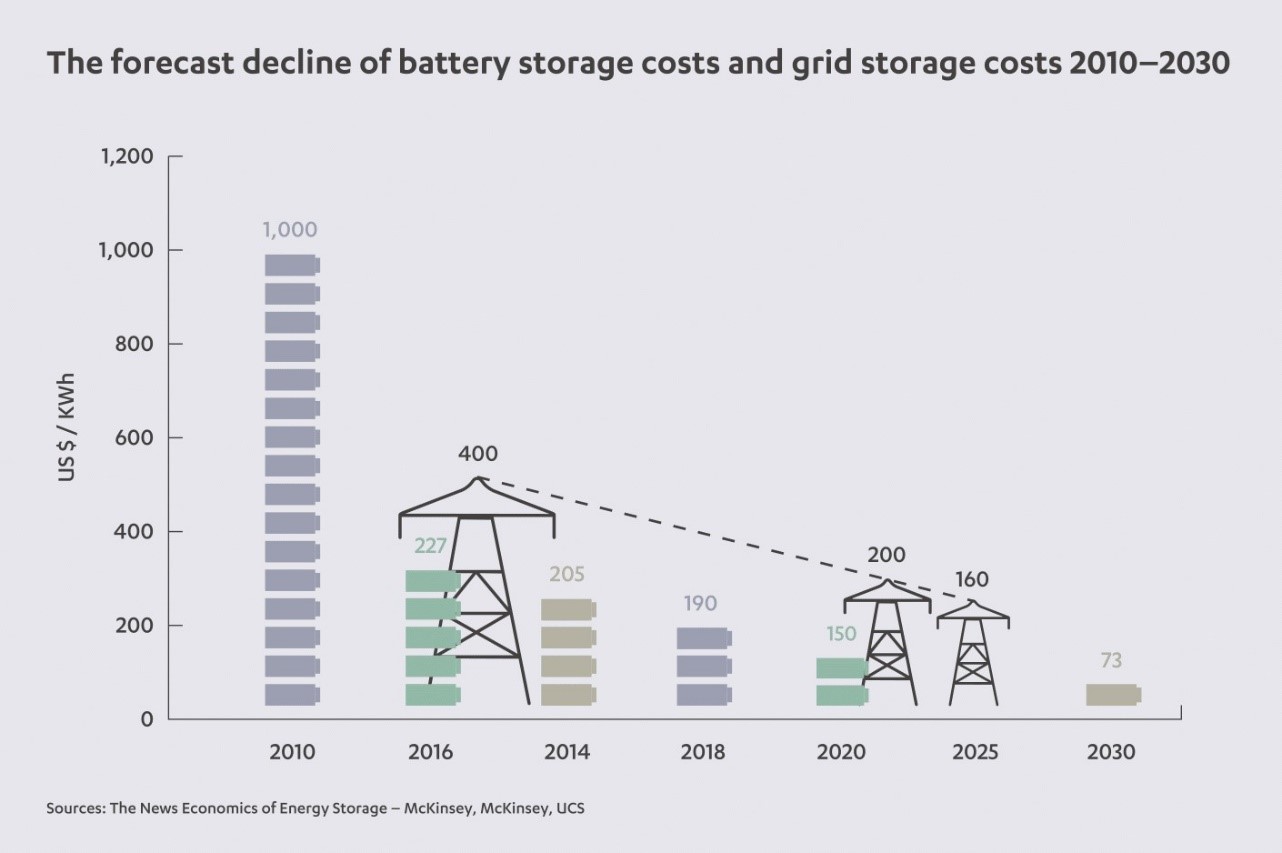
Seb Henbest, Head of EMEA at Bloomberg New Energy Finance (BNEF), says:
“The arrival of cheap battery storage will mean that it becomes increasingly possible to finesse the delivery of electricity from wind and solar, so that these technologies can help meet demand even when the wind isn’t blowing and the sun isn’t shining. The result will be renewables eating up more and more of the existing market for coal, gas and nuclear[3].”
A pioneering development in Chile is already turning these predictions into reality. Fotowatio Renewable Ventures (FRV), part of Abdul Latif Jameel Energy, is developing a groundbreaking 540 GWh hybrid solar-wind energy project with integrated battery storage capabilities.
The project, FRV’s third in Latin America, is the company’s first hybrid wind-solar project and the first to use battery storage, enabling it to provide 24/7 renewable power.
 “When the conditions are not suitable for solar or wind power, the batteries automatically step in and discharge their stored renewable energy, maintaining an uninterrupted supply of renewable energy into the network at all times,” explains Daniel Sagi-Vela, CEO of FRV.
“When the conditions are not suitable for solar or wind power, the batteries automatically step in and discharge their stored renewable energy, maintaining an uninterrupted supply of renewable energy into the network at all times,” explains Daniel Sagi-Vela, CEO of FRV.
Similar innovations are transforming the sustainability of renewable energy projects all around the world, including in Japan, where Tokyu Land Corp, Mitsubishi UFJ Lease and Finance and Green Power Development Corporation are constructing a 92 MW solar power plant with a 25 MWh lithium-ion battery in Kushiro-cho, Hokkaido[4].
The current position of battery storage
Experts at McKinsey & Co. firmly believe that “there is… no doubt that storage’s time is coming[5].”
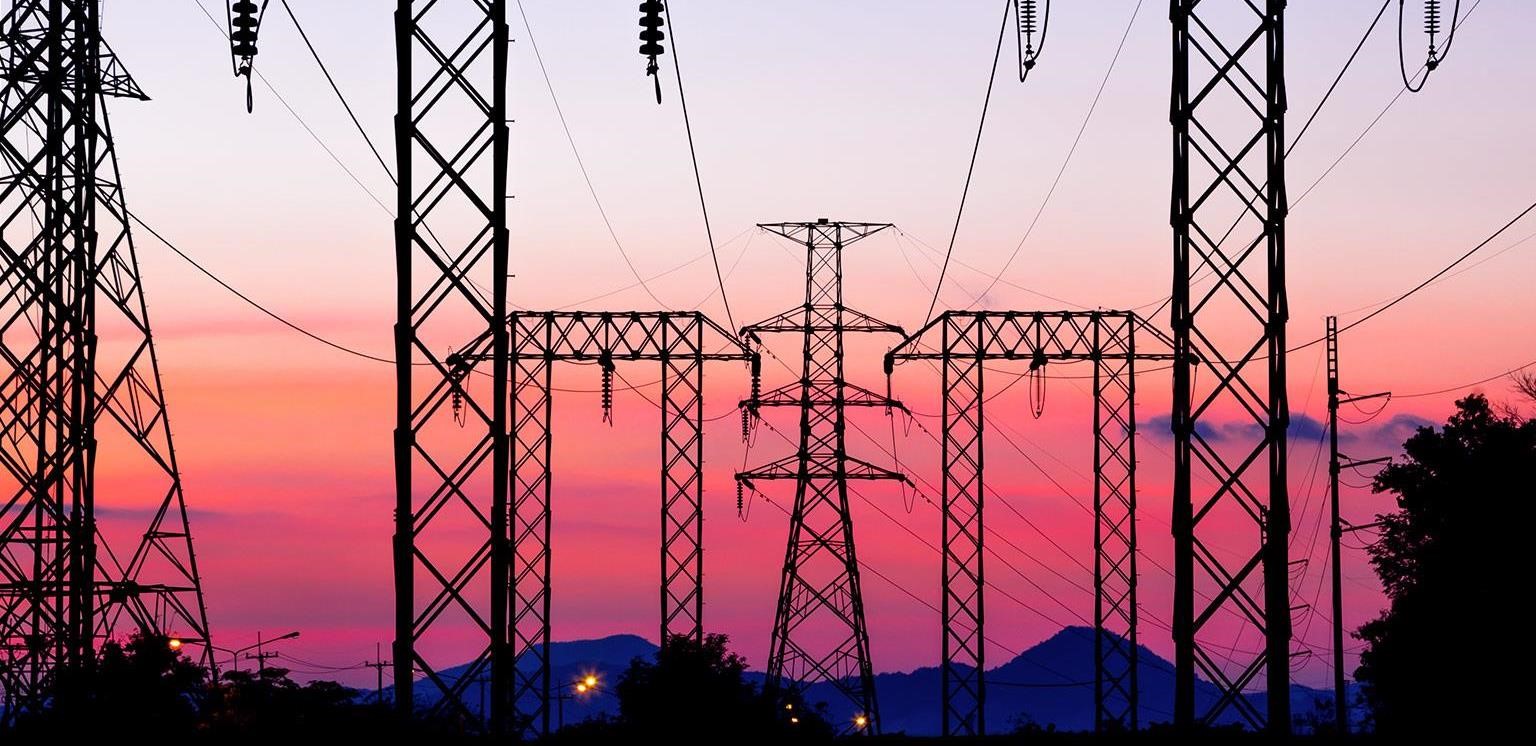
Bloomberg NEF predicts that US$ 548 billion will be invested in battery advanced capacity technology by 2050, with 41% of that heading to Asia Pacific and US$ 168 billion pouring into Europe[6].
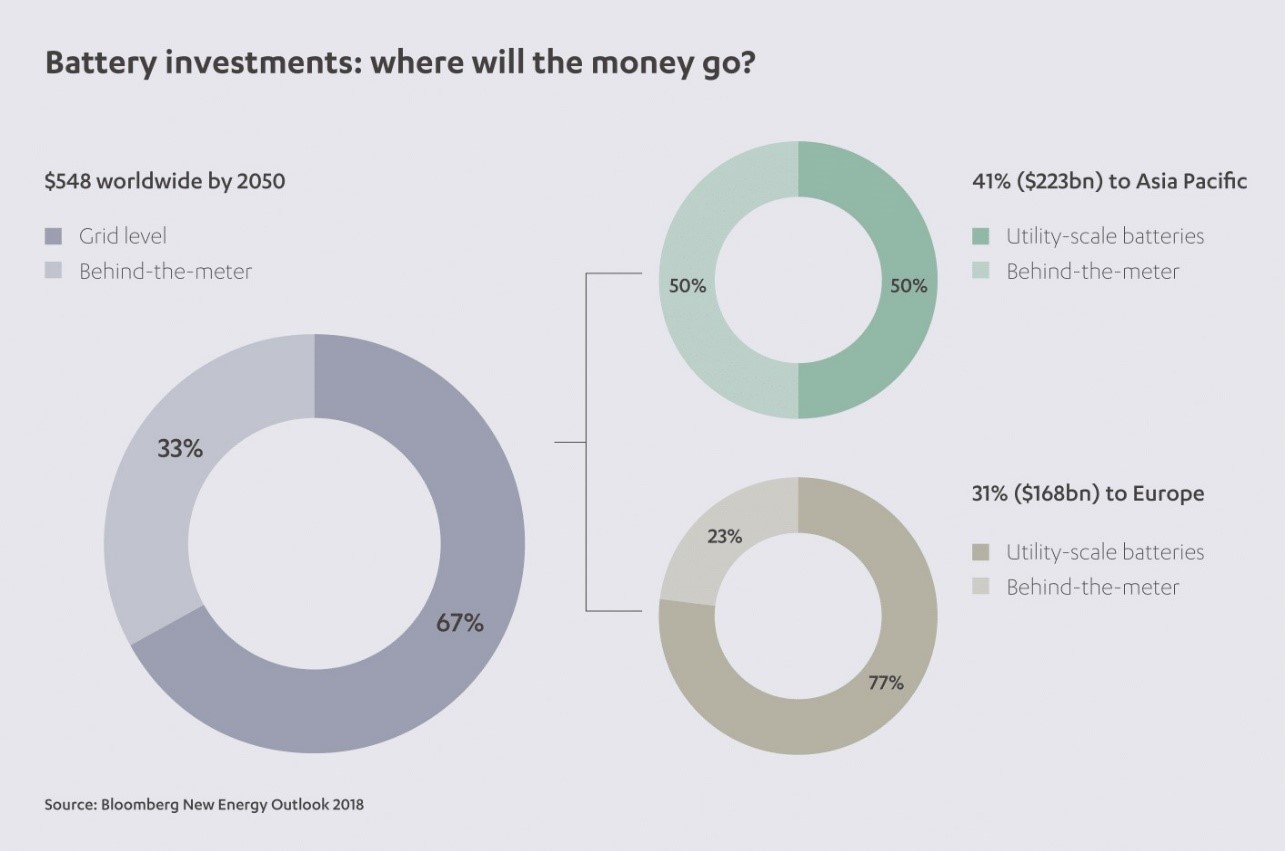

Of the 1,291 GW of new capacity it anticipates, two-thirds will, it says, be at the grid level, with the other 33% coming from private installations in homes and businesses[7].
Against this backdrop, the ability of battery storage technology to generate headlines around the world is understandable. In part, that has been due to the publicity generated by Elon Musk and his company Tesla, when in 2017 they delivered what was then the world’s largest lithium ion battery to the Hornsdale Power Reserve in South Australia. Mr Musk had taken part in a high-profile wager that he could deliver the battery in just 100 days – or forfeit any payment for the project.
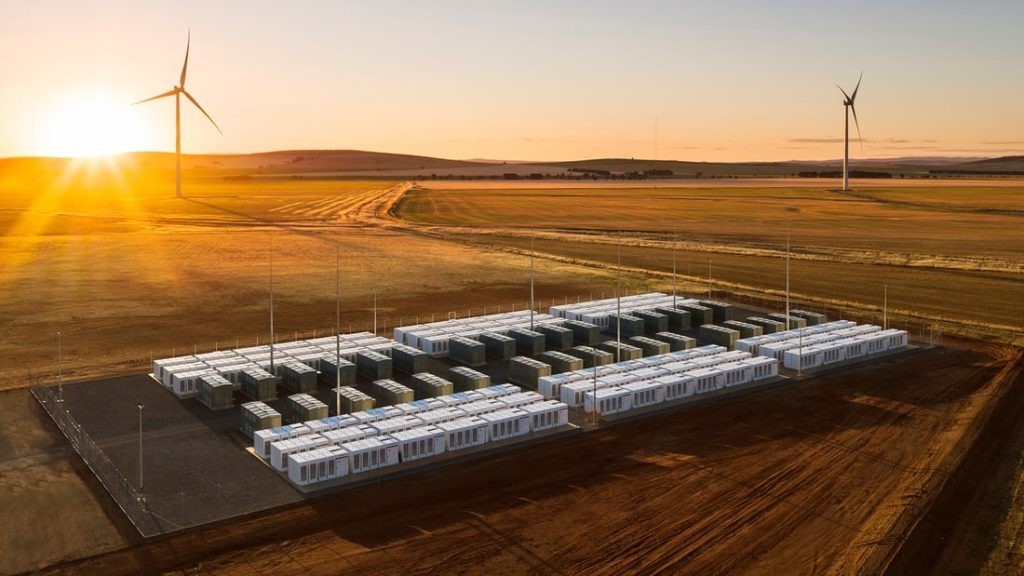
The battery, which stores excess energy from wind turbines at the Hornsdale wind farm[8], holds enough power for 8,000 homes for 24 hours, or more than 30,000 houses for an hour during a blackout[9]. Within its first month of operation, it showed its value on two separate occasions. It responded in just 140 milliseconds when the Loy Yang powerplant in Victoria, which is coal-fired, suffered a power cut in December 2017[10]. Tom Koutsantonis, Australia’s State Energy Minister, drew a stark contrast with the alternative, Torrens Island power station, which “would take half an hour to an hour to energize and synchronize into the market[11]”.
It is a basic law of energy provision that if power demand exceeds generation, an alternative source must provide a balance. Yet even traditional power plants with steam turbines can take 30 seconds to take effect[12]. So while Tesla’s battery responded far quicker than Torrens Island, it is significantly outperformed by a battery storage solution used on Germany’s network that can increase its output power from 0 to 100% in 40 milliseconds[13]. And Sanjeev Gupta, a British billionaire, is already planning to install a battery bigger than Tesla’s as part of a US$ 1 billion renewable energy plan in South Australia[14].
Meanwhile, in Mexico, the country’s first grid-scale battery has been installed as a backup to a 130MW microgrid serving a car factory in Monterrey. “We needed something that could react extremely fast,” said Matt Ginzberg, Principal at Arroyo Energy, the developer of the battery[15].
The economics of success
Just as important as the speed of performance of battery-based power generation, however, are the economic issues.
For any new development to reach large-scale deployment in the energy sector requires a favorable economic landscape. With the advance of technology, the economics of battery storage are becoming impossible to ignore.
“Grid-scale batteries need to make almost US$ 200 a megawatt-hour for each charge-discharge cycle to break even. But that could dip below $100 by 2020[16],” according to a BNEF report released in July 2018.
According to 2015 study The Economics of Battery Energy Storage, prepared by the Rocky Mountain Institute (RMI), energy storage makes sense when multiple functions can be achieved with an installation. This can then translate into multiple sources of revenue or avoided cost credits (illustrated below).
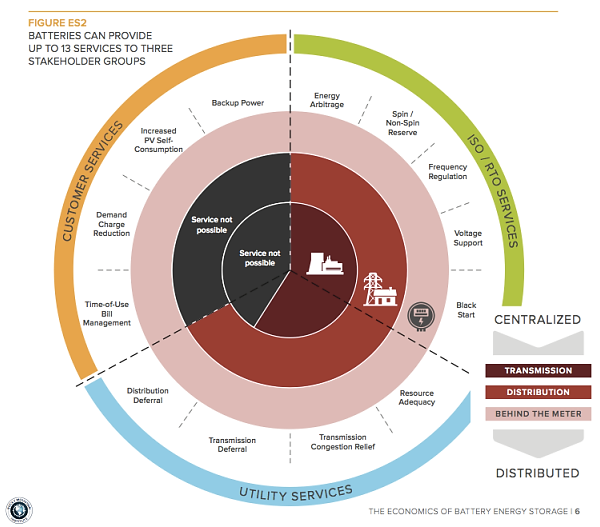
The installation of battery storage systems also leads to significant savings from not needing to build ‘peaker’ plants that operate just a few hours a day[17]. The sums, it is argued, make the upfront cost of a battery-based facility all the more lucrative[18].
It is this win-win combination that has prompted officials from New York State to set a target of deploying 1,500 MW of energy storage by 2025[19]. This is equivalent to the electric demand of 20% of all New York State homes. Its plans, which position “energy storage … at the forefront of the dynamic changes occurring in New York’s energy sector”, are set to deliver a raft of benefits[20], including:
- Reducing CO2 emissions by one million tons over 10 years
- Creating 30,000 jobs in the storage sector by 2030
- Delivering the ability to meet peak demand surges as renewable energy takes a greater proportion of the state’s energy mix
A greener future for desalination plants
Combined renewable energy and battery storage solutions also have the potential to drive forward the sustainability agenda in other industries vital to the ‘infrastructure of life’, such as water provision.
One of the biggest challenges in improving the sustainability and commercial feasibility of water desalination plants is power. Conventional thermal desalination plants consume a lot of energy, which leads to high carbon emissions. Even if renewable energy solutions, like solar or wind power, are used, these power sources do not operate 24 hours a day, 7 days a week, so oil or gas-based turbines are still required to plug the gaps in the renewable energy supply, generating a large carbon footprint.
The new generation of reverse osmosis desalination plants are considerably more energy efficient than thermal plants, as much as ten times more efficient in fact, but the lack of a round-the-clock renewable energy source still poses a problem.
With a combined renewable energy and battery storage solution, however, like the one FRV is pioneering in Chile, it will be possible to power the desalination plan with uninterrupted renewable energy 24/7.
Not only would this make the desalination process carbon neutral, it would also free up vast quantities of oil for export, rather than using it to power desalination plants, particularly immensely power-hungry thermal plants.

“A renewable energy solution would also offer more flexibility in terms of locating the desalination plant,” says Carlos Cosin, CEO of Almar Water Solutions, part of Abdul Latif Jameel Energy. “You wouldn’t need to site the desalination plant close to a traditional power plant any more. It could be built much closer to the towns and cities where the water is actually needed.”
Powering a private energy revolution
While it is clear the advances in battery storage are likely to redefine the energy and water desalination sectors, it is not just large-scale infrastructural developments and public systems that could benefit.
There is growing excitement from leading industry figures about the potential for battery storage to transform energy use at the residential level, too, with private individuals powering their homes around the clock from solar panels and household battery storage facilities.
McKinsey & Co. is among those leading the positive assessments for household battery storage. “Eventually, combining solar with storage and a small electrical generator (known as full grid defection) will make economic sense – in a matter of years, not decades, for some customers in high-cost markets[21].”
The initial signs of this promise becoming a reality are starting to appear in South Australia, where solar panels and batteries are being installed in 50,000 homes[22]. In the Far East, Tokyo Electric Power Holdings (TEPCO) – one of the Japan’s national utilities and grid operators – plans to offer its customers solar PV-plus-battery energy storage for their homes, as part of the country’s move towards zero energy standards for housing[23].
“There are different technologies and a lot of research and development going on around batteries[24],” says Daniel Sagi-Vela, CEO of FRV. “With battery storage, you could run everything in a house – including air conditioning – from the panels you put on your roof. You’d automatically charge the batteries in certain parts of the day when you’re not using other utilities or equipment.”
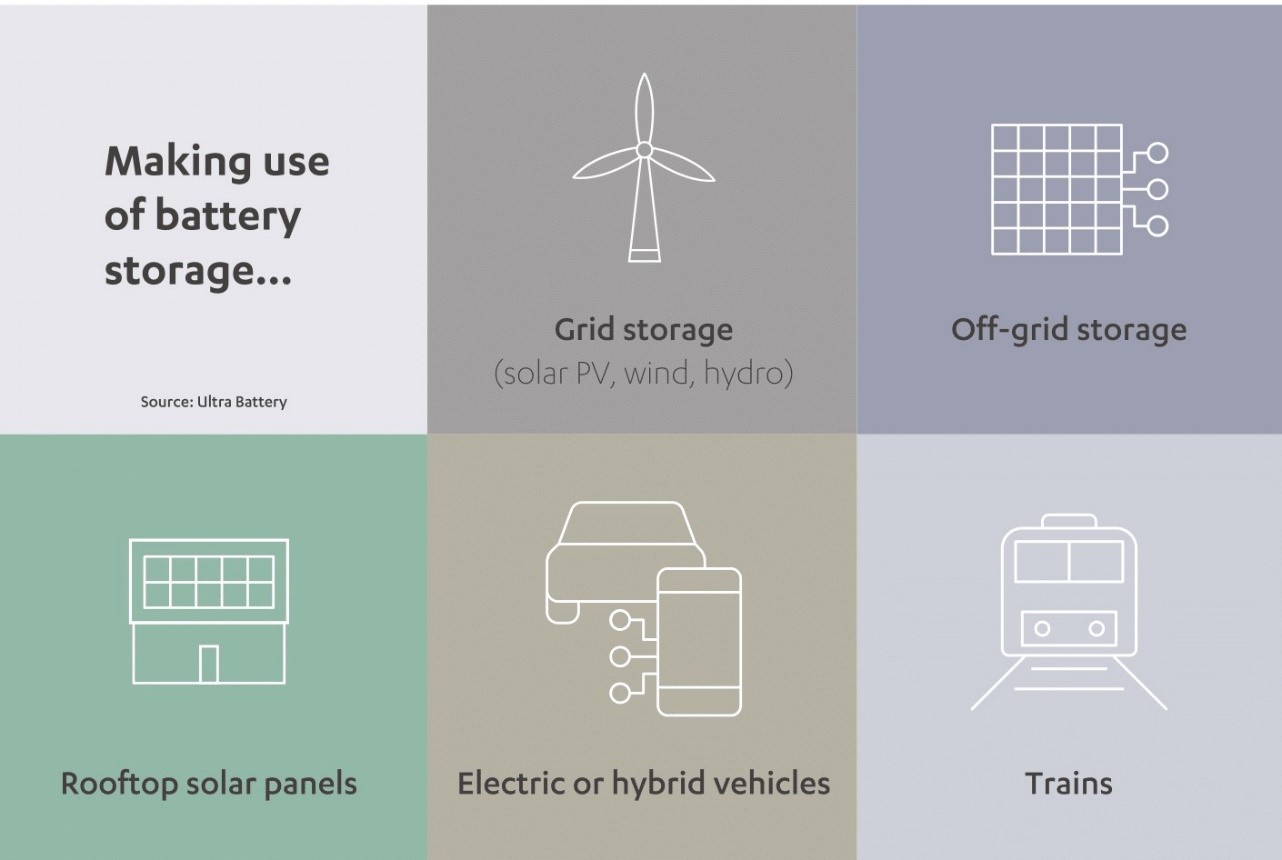
In May 2018, batteries formed a key part of the thinking that helped to push California to become the first U.S. state to make solar panels on new homes and low-rise apartment buildings compulsory from 2020[25]. Meanwhile in Nova Scotia, Canada, Nova Scotia Power is planning to leverage battery power to help it meet a 40% renewables target by 2020.
As part of a pioneering trial, it installed high-capacity batteries at 10 customer homes. The batteries are linked to an electrical line powered in part by wind turbines. The move was described as a “game changer” by Jill Searle, Senior Program Manager at Nova Scotia Power. She said: “Battery storage technology is the next big thing in terms of how Nova Scotia Power will be able to provide that reliable, ‘always on’ service to our customers[26].”
In a similar approach, households in Germany can purchase a battery storage-based power package, including a PV system and 4.4 KW/h storage device that can meet the electricity needs of a small family during the evening and the night hours[27].
At the heart of a new future for Saudi Arabia
It is now widely accepted that the introduction of battery storage facilities will be a game-changer in the industries that are so vital to the ‘infrastructure of life’ – power and water.
 Omar Al-Madhi, CEO of Abdul Latif Energy Saudi Arabia and Senior Managing Director and Member of the Board at Abdul Latif Jameel Investments, is leading his organization’s efforts in the country to be at the forefront of this exciting phase, bringing together global knowledge and a highly experienced leadership team in Abdul Latif Jameel Energy and FRV, in a determined bid to deliver a cleaner, healthier future for Saudi Arabia and the wider MENAT region.
Omar Al-Madhi, CEO of Abdul Latif Energy Saudi Arabia and Senior Managing Director and Member of the Board at Abdul Latif Jameel Investments, is leading his organization’s efforts in the country to be at the forefront of this exciting phase, bringing together global knowledge and a highly experienced leadership team in Abdul Latif Jameel Energy and FRV, in a determined bid to deliver a cleaner, healthier future for Saudi Arabia and the wider MENAT region.
“By combining battery storage with Abdul Latif Jameel Energy’s best-in-class renewable energy provision across solar PV, wind and water solutions, Saudi Arabia can achieve a transformational change and position itself as a strategic giant in the world’s renewable energy market for the 21st century and beyond.”
Mr. Al Madhi’s ambitions align closely with the stated goals of Saudi Arabia’s Vision 2030 plan, which highlights that “by preserving our environment and natural resources, we fulfill our Islamic, human and moral duties[28]”. In a further indication of the country’s preparedness to support new technological advances such as battery storage solutions, it adds:
“Preservation is also our responsibility to future generations and essential to the quality of our daily lives. We will seek to safeguard our environment by … reducing all types of pollution.”
Indeed, as we prepare to enter the third decade of the 21st Century, battery storage looks set to play an increasingly integral role in the world’s energy mix. For environmental, efficiency and economic reasons, a technology that was once widely ignored is now emerging as a key support mechanism for both grid-scale power and private residences – as well as offering exciting new possibilities in the automotive sector. Abdul Latif Jameel relishes the opportunity to be at the center of this latest energy revolution as we continue to strive to deliver a better future for all.
[1] Electricity Storage Insight, KPMG, 2016
[2] New Energy Outlook 2018, Bloomberg NEF, 2018
[3] New Energy Outlook 2018, Bloomberg NEF, 2018
[4] Japan’s Largest-scale Battery-equipped Solar Plant to Be Built in Hokkaido, Solar Power Plant Business, 6 September 2017
[5] Battery storage: The next disruptive technology in the power sector, McKinsey & Company, June 2017
[6] New Energy Outlook 2018, Bloomberg NEF, 2018
[7] New Energy Outlook 2018, Bloomberg NEF, 2018
[8] Tesla’s enormous battery in Australia, just weeks old, is already responding to outages in ‘record’ time, The Washington Post, 26 December 2017
[9] Elon Musk just met his 100-day deadline on a $50 million bet and Tesla’s giant battery is ready to roll, Business Insider Australia, 23 November 2017
[10] Elon Musk’s massive backup battery took just 140 milliseconds to respond to crisis at power plant, International Business Times, 25 December 2017
[11] Elon Musk’s massive backup battery took just 140 milliseconds to respond to crisis at power plant, International Business Times, 25 December 2017
[12] Distributed Energy: Innovation in solar, PwC, 15 August 2016
[13] Distributed Energy: Innovation in solar, PwC, 15 August 2016
[14] Sanjeev Gupta: $1bn South Australia renewable energy plan will mean cheaper power, The Guardian, 15 August 2018
[15] Mexico Gets Its First Grid-Scale Battery – at a Car Factory, Green Tech Media, 17 December 2018
[16] There’s a Hidden Battery Play in the ‘Extremes’ of Power Prices, Renewable Energy World, 31 July 2018
[17] Hyundai building 150 MW energy storage battery in South Korea, Digital Journal, 7 December 2017
[18] Hyundai building 150 MW energy storage battery in South Korea, Digital Journal, 7 December 2017
[19] New York unveils roadmap to 1.5 GW storage by 2025, Utility Dive, 21 June 2018
[20] New York State Energy Storage Roadmap and Department of Public Service / New York State Energy Research and Development Authority Staff Recommendations, 21 June 2018
[21] Battery storage: The next disruptive technology in the power sector, McKinsey & Company, June 2017
[22] Tesla Tapped by Australia for Solar-plus-Storage Virtual Power Plant Plan, Renewable Energy World, 5 February 2018
[23] Renewable retail plans from Japanese utility TEPCO include home battery rollout, Energy Storage News, 5 April 2018
[24] The Business Breakfast, DubaiEye 103.8, 17 January 2018
[25] California poised to be first state to require solar panels on new homes, The Guardian, 9 May 2018
[26] Nova Scotia Power Engages Eager Elmsdale Residents to Test Intelligent Feeder Pilot Project, Nova Scotia Power, 8 February 2018
[27] Electricity Storage Insight, KPMG, 2016
[28] Vision 2030, Kingdom of Saudi Arabia





 1x
1x

 Added to press kit
Added to press kit


